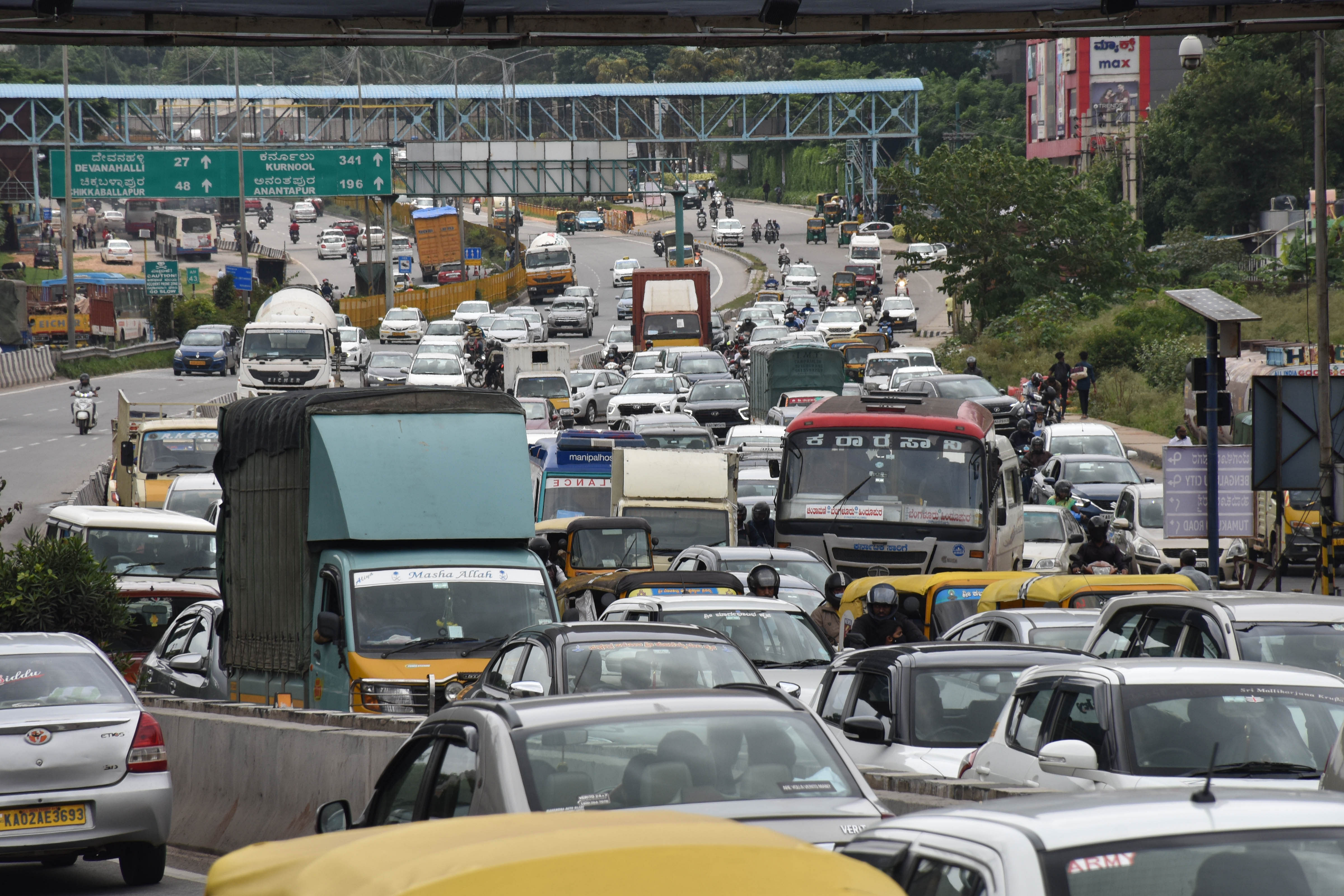
Bengaluru will be investing Rs 27,000 crore on infrastructure projects, such as the suburban rail project, over the next 40 months, to ease traffic congestion in the city. The third-most populous city in the country, Bengaluru is expanding rapidly with its spatial growth increasing by 60 sq km per year within the metropolitan region. The TomTom 2020 study named Bengaluru as the worst city in the world in terms of traffic congestion, with people spending an additional 10 days and three hours stuck in traffic every year.
The city has been investing in flyovers, road widening and junction improvement projects, but this has only resulted in more congestion. It is apparent the city needs to move away from the current ‘traffic management’ approach to embrace transformative solutions.
In the last decade, the number of private vehicles in Bengaluru increased from 5.03 million to 10.04 million, while the number of its public transport buses barely inched their way, from 6,064 (2011) to 6,763 (2022). Electrification of public bus transport ranks high on India’s sustainable urban mobility agenda. The central government is planning to ramp up cleaner mobility solutions for public transit with the deployment of 50,000 e-buses over the next 5-7 years. With ‘The Grand Challenge’ tender, Convergence Energy Services Limited (CESL, a PSU of the Ministry of Power) is looking to deploy 5,450 e-buses across five cities, including Bengaluru. To make the most of this opportunity, the Bengaluru Metropolitan Transport Corporation (BMTC) should aim to increase its fleet size to 12,000 buses within the next five years.
For gridlocked Bengaluru, completion of Namma Metro’s Phase-II is crucial. An effective project management system (PMS) can help in this regard. This digital platform can monitor the project to ensure budget and timeline adherence with any lapses getting immediately highlighted. This transparency will ensure that the relevant authority is held accountable for delays and cost escalations.
Multi-modal integration allows hassle-free transfers between different modes of transport and encourages use of public transport, walking and cycling. Mass transit infrastructure also have the potential to attract jobs and trigger transformation that can achieve the desired socio-economic outcomes. This needs to be carefully channelised, through policies, regulatory support and coordinated action by the government.
Globally, cities are also using parking as an effective tool to achieve sustainable urban growth. Bengaluru needs to undertake policy reforms to manage its ever-increasing demand for parking. These include incorporating pricing models for parking, setting stringent norms for parking space requirements (both on-street and off-street parking), ensuring zero parking along prime transit corridors and diverting revenue generated from parking charge towards building better transit infrastructure.
Cities that plan for walking and cycling have seen a significant increase in road safety. While behaviour change is key, the focus must also shift to safer infrastructure – streets that do not just prioritise moving vehicles but also focus on moving people, i.e., streets that are designed for all road-users. Bengaluru sees substantial pedestrian fatalities every year. The city needs a robust programme to develop 5,000 km of safe walking and cycling pathways, over the next five years, connecting heavy footfall areas such as metro stations, schools and business spaces. With year-round pleasant temperatures, even terrains and one-way commuting distances in the city averaging around 11 km, cycling has the potential to become the preferred mode of transport in the city.
Innovative technologies can play a key role in better traffic management, prioritising public transport and enhancing the user experience. Technology can, among other things, improve first and last-mile connectivity, enhance ticketing experiences, improve crowd management and route-planning and provide real-time passenger information. Introducing the QR code-based ticketing app during the pandemic helped the Delhi government regain ridership on its public buses.
In line with the National Urban Transport Policy, the Bangalore Metropolitan Land Transport Authority (BMLTA) was envisioned as a unified transport body that will take critical decisions on all transport modes. The draft BMLTA bill, which has proposed several measures to address Bengaluru’s traffic chaos, however, is in the eye of a storm. The recent decision to transfer all powers from the BMLTA to the Bengaluru Metropolitan Regional Development Authority (BMRDA), with the BMRDA gaining sweeping powers, is only likely to complicate matters further.
Bengaluru is at a crucial juncture. Decisions and projects implemented today will be “locked in” for the next 40-100 years. As the city focuses on large-scale infrastructure investments, it also needs to look at more far-reaching, equitable and sustainable solutions that will make navigating the city smoother for all.
(The writer is Programme Director – Integrated Transport, Electric Mobility and Hydrogen at World Resources Institute India)